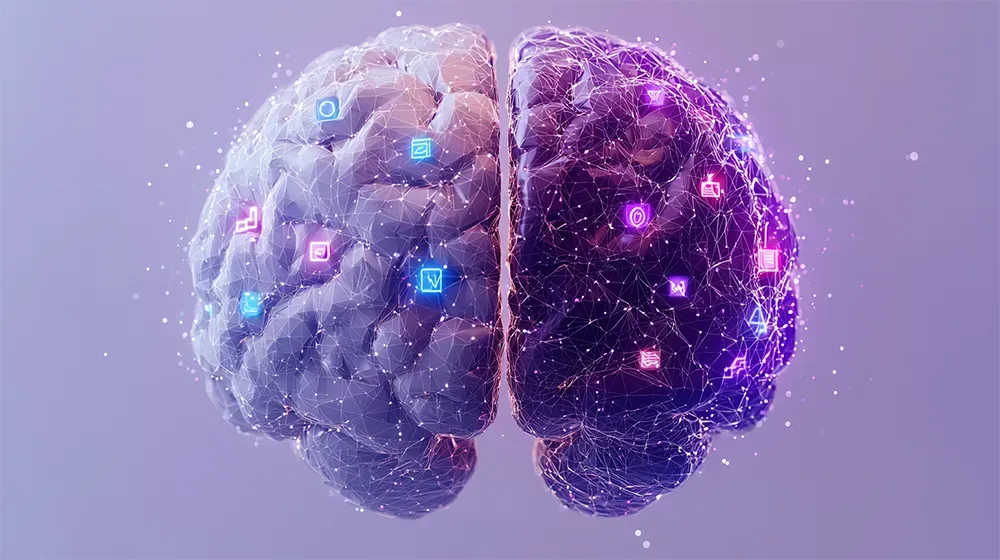Innovation Keynote Speaker: Your Guide to Understanding Edge Computing

Innovation Keynote Speaker: Your Guide to Understanding Edge Computing
As technology continues to advance at an unprecedented pace, businesses are constantly seeking ways to gain a competitive edge. One concept that has gained increasing popularity is edge computing. But what exactly is it, and how can it benefit your business? In this article, we will explore the world of edge computing and the role of an innovation keynote speaker in simplifying its complexities. So, grab a cup of coffee, sit back, and let's dive in!
Understanding the Basics of Edge Computing
Before we delve into the intricacies of edge computing, it's important to have a solid understanding of the basics. At its core, edge computing involves the processing and analyzing of data at the "edge" of a network, closer to the source of data generation. Unlike traditional cloud computing, where data is sent to a central server for processing, edge computing brings computation and data storage closer to the devices or sensors that generate the data.
This decentralized approach offers several advantages. Firstly, it reduces latency, as the data doesn't have to travel long distances to reach a central server. This is particularly crucial in applications such as autonomous vehicles or industrial IoT, where real-time decision making is essential. For example, imagine a self-driving car that needs to make split-second decisions to avoid an obstacle. With edge computing, the car can process the data from its sensors immediately, without having to wait for a response from a distant server.
Secondly, edge computing reduces bandwidth usage and alleviates network congestion. By processing data locally, only relevant information is sent to the cloud, reducing the volume of data that needs to be transmitted. This is especially beneficial in scenarios where bandwidth is limited or expensive. For instance, in remote areas or developing countries, where internet connectivity may be unreliable or costly, edge computing allows devices to operate efficiently without relying heavily on cloud services.
Moreover, edge computing enhances data security and privacy. By processing data locally, sensitive information can be kept within the premises, reducing the risk of unauthorized access or data breaches. This is particularly important in industries such as healthcare or finance, where data privacy regulations are stringent. For instance, in a hospital setting, patient data can be processed and analyzed at the edge, ensuring that sensitive medical information remains within the hospital's secure network.
Lastly, edge computing enables offline operation and resilience. In scenarios where internet connectivity is limited or unreliable, edge devices can continue to function and make critical decisions. This is especially relevant in remote areas or during natural disasters, where network infrastructure may be damaged or unavailable. For example, in a remote oil rig, edge devices can continue to monitor and control operations even if the rig loses internet connectivity, ensuring uninterrupted production and safety.
In conclusion, edge computing offers numerous advantages over traditional cloud computing. It reduces latency, bandwidth usage, and network congestion while enhancing data security, privacy, and offline operation. As technology continues to advance, edge computing is expected to play a pivotal role in enabling the next generation of innovative applications and services.
The Role of an Innovation Keynote Speaker in Simplifying Edge Computing
Now that we have a grasp of the fundamentals, how can an innovation keynote speaker assist in simplifying the complexities of edge computing? The primary role of an innovation keynote speaker is to bridge the gap between technical jargon and practical applications. They serve as a guide, patiently explaining the intricate details of edge computing in a way that is accessible to a wide range of audiences.
By leveraging their extensive knowledge and expertise, these keynote speakers break down complex concepts into easily digestible nuggets of information. They use relatable analogies and real-life examples to illustrate how edge computing can transform businesses across various industries. Through engaging storytelling and interactive presentations, they captivate their audience, leaving them with a deep understanding of edge computing's potential.
Furthermore, an innovation keynote speaker brings valuable insights and trends to the table. They stay up-to-date with the latest developments in the field of edge computing and provide actionable advice for businesses looking to embrace this technology. Their ability to distill vast amounts of information into concise and meaningful takeaways enables organizations to make well-informed decisions and stay ahead of the competition.
One of the key ways in which an innovation keynote speaker simplifies edge computing is by demystifying the technical jargon that often surrounds this topic. They understand that not everyone in the audience may have a background in computer science or IT, so they make a conscious effort to explain complex terms in a way that is easy to understand.
For example, when discussing the concept of edge computing, an innovation keynote speaker may compare it to a traffic intersection. They explain that just as a traffic intersection helps to distribute and manage traffic flow efficiently, edge computing enables the distribution of computing power and data processing closer to the source, reducing latency and improving overall performance.
In addition to relatable analogies, innovation keynote speakers also use real-life examples to demonstrate the practical applications of edge computing. They showcase how businesses in different industries, such as healthcare, manufacturing, and retail, have successfully implemented edge computing solutions to enhance their operations.
For instance, they might share the story of a hospital that leveraged edge computing to improve patient care. By deploying edge devices in patient rooms, they were able to collect and analyze vital signs in real-time, alerting medical staff of any abnormalities immediately. This not only saved valuable time but also improved patient outcomes.
Moreover, innovation keynote speakers stay abreast of the latest trends and advancements in edge computing. They continuously research and analyze industry reports, case studies, and emerging technologies to provide up-to-date insights to their audience.
They might discuss how edge computing is evolving with the rise of 5G technology, enabling faster and more reliable data processing at the edge. They also highlight the potential of edge AI, where artificial intelligence algorithms are deployed directly on edge devices, enabling real-time decision-making without relying on cloud connectivity.
By sharing these insights, innovation keynote speakers empower businesses to make informed decisions about adopting edge computing. They provide actionable advice on how to navigate the challenges and capitalize on the opportunities presented by this transformative technology.
In conclusion, an innovation keynote speaker plays a crucial role in simplifying the complexities of edge computing. They bridge the gap between technical jargon and practical applications, using relatable analogies and real-life examples to engage and educate their audience. By staying up-to-date with the latest trends and insights, they empower businesses to embrace edge computing and unlock its full potential.
Benefits of Edge Computing for Businesses
Now that we have demystified the complexities of edge computing, let's explore its benefits for businesses. One of the key advantages is improved operational efficiency. By processing data locally, businesses can reduce the cost and complexity associated with transmitting large volumes of data to the cloud. This optimization of resources allows for faster decision-making and enhanced overall performance.
Additionally, edge computing enables real-time analytics and insights. By analyzing data at the edge, businesses can gain immediate access to actionable information, allowing for faster response times and proactive decision-making. This is especially valuable in industries where split-second decisions can have a significant impact, such as healthcare, finance, and manufacturing.
Another benefit of edge computing is increased reliability and resilience. By distributing processing power across multiple edge devices, businesses can ensure that their operations continue uninterrupted, even in the event of network outages. This high level of fault tolerance provides peace of mind and safeguards against costly downtime.
Moreover, edge computing promotes data privacy and security. As data is processed and analyzed locally, businesses can maintain control over their sensitive information. This is particularly important for industries that handle personally identifiable information or trade secrets. By keeping data within their premises, businesses can mitigate the risks associated with transmitting sensitive data to the cloud.
How an Innovation Keynote Speaker Demystifies the Complexities of Edge Computing
By now, you may be wondering how an innovation keynote speaker demystifies the complexities of edge computing. Through their expertise and dynamic presentation skills, these speakers break down the technical intricacies into easily understood concepts. They use real-world examples and relatable anecdotes to illustrate how businesses can leverage edge computing to drive innovation and gain a competitive edge.
For instance, imagine a retail company that wants to offer personalized recommendations to its customers in real-time. An innovation keynote speaker might explain how edge computing can enable the company's mobile app to process customer data locally, instantly analyzing browsing history, purchase patterns, and location to deliver personalized recommendations without relying on a central server. This on-the-spot analysis enhances the customer experience and increases the chances of conversion.
Furthermore, an innovation keynote speaker might discuss the use of edge computing in the agriculture industry. They might describe how IoT sensors distributed throughout a farm can collect data on soil moisture, temperature, and crop growth. By processing this data at the edge, farmers can receive real-time insights on crop health and irrigation needs, optimizing resource allocation and improving overall yield.
Future of Edge Computing: A Glimpse into What's Next
As we look to the future, the potential of edge computing seems boundless. With the proliferation of IoT devices and the explosion of data generation, edge computing is set to become even more critical in enabling real-time decision-making and driving innovation.
One exciting area where edge computing is gaining traction is in the realm of autonomous vehicles. With the need for split-second decision-making and immense amounts of data processing, having the computational power at the edge is crucial for safe and efficient autonomous driving. This is just one example of how edge computing will revolutionize industries and reshape our world.
Another area to watch is the integration of artificial intelligence and edge computing. By bringing AI capabilities to the edge, businesses can unlock new opportunities for processing and analyzing data in real-time. Imagine a smart home that uses AI algorithms at the edge to learn user preferences and adapt the environment accordingly, creating a personalized living space that seamlessly anticipates and fulfills our needs.
Conclusion
In conclusion, edge computing holds immense potential for businesses across various industries. Its ability to bring processing power closer to the source of data generation offers a wide range of benefits, including reduced latency, improved operational efficiency, enhanced security, and increased resilience. However, navigating the complexities of edge computing can be daunting. That's where innovation keynote speakers step in, simplifying the concepts and providing valuable insights to guide organizations in harnessing the power of edge computing. So, as you venture into the world of edge computing, consider enlisting the expertise of an innovation keynote speaker to help unlock its full potential.
Frequently Asked Questions
1. What is edge computing?
Edge computing involves processing and analyzing data at the "edge" of a network, closer to the source of data generation. It brings computation and data storage closer to devices or sensors, reducing latency and improving real-time decision making.
2. How does edge computing benefit businesses?
Edge computing offers several advantages for businesses. It reduces latency, bandwidth usage, and network congestion, enhances data security and privacy, enables offline operation and resilience, and improves operational efficiency and real-time analytics.
3. How can an innovation keynote speaker simplify the complexities of edge computing?
An innovation keynote speaker simplifies edge computing by bridging the gap between technical jargon and practical applications. They use relatable analogies, real-life examples, and stay up-to-date with the latest trends to engage and educate their audience, empowering businesses to embrace edge computing and unlock its full potential.
Contact Dr Mark van Rijmenam - Innovation Keynote Speaker for Your Event
Having explored the transformative potential of edge computing, isn't it time you brought this cutting-edge insight to your next event? Dr Mark van Rijmenam, a renowned Innovation Keynote Speaker, is an expert in simplifying complex concepts such as edge computing, making them accessible and engaging for all audiences. With his vast knowledge, relatable analogies, and dynamic presentation style, Dr van Rijmenam provides your audience with actionable insights, keeping your business at the forefront of innovation. Don't miss this opportunity to elevate your next event with a keynote that will leave your audience inspired and informed. Simply complete the form below, and we will be in touch within 24 hours to discuss how Dr van Rijmenam can bring the future of technology to your event today.





